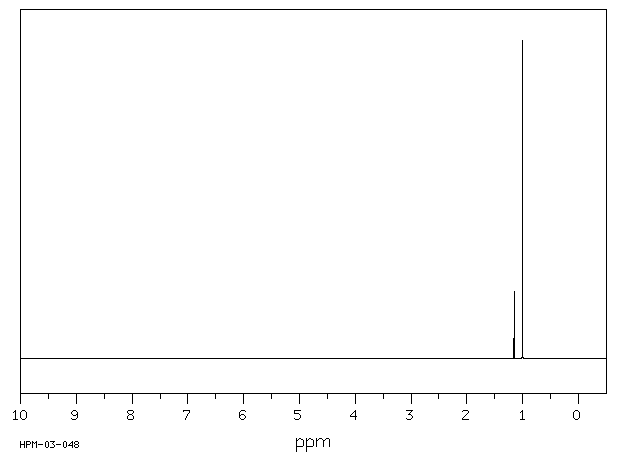二(2,2-二甲基丙基)汞 | 10284-49-8
中文名称
二(2,2-二甲基丙基)汞
中文别名
——
英文名称
di-(neopentyl)-mercury
英文别名
dineopentylmercury;dineopentyl-mercury;Dineopentyl-quecksilber;Di-neopentyl-quecksilber;Di-neopentylquecksilber;Dineopentylquecksilber
CAS
10284-49-8
化学式
C10H22Hg
mdl
——
分子量
342.875
InChiKey
JPOHACHTCANVDL-UHFFFAOYSA-N
BEILSTEIN
——
EINECS
——
-
物化性质
-
计算性质
-
ADMET
-
安全信息
-
SDS
-
制备方法与用途
-
上下游信息
-
文献信息
-
表征谱图
-
同类化合物
-
相关功能分类
-
相关结构分类
计算性质
-
辛醇/水分配系数(LogP):4.0
-
重原子数:11
-
可旋转键数:2
-
环数:0.0
-
sp3杂化的碳原子比例:1.0
-
拓扑面积:0
-
氢给体数:0
-
氢受体数:0
安全信息
-
海关编码:2931900090
SDS
反应信息
-
作为反应物:描述:参考文献:名称:Fraenkel, Gideon; Chow, Albert; Winchester, William R., Journal of the American Chemical Society, 1990, vol. 112, # 17, p. 6190 - 6198摘要:DOI:
-
作为产物:描述:参考文献:名称:The Treatment of Neopentyl Halides with Di-p-tolylmercury摘要:DOI:10.1021/ja01875a074
文献信息
-
Reactions of 5-(alkyl)thianthrenium and other sulfonium salts with nucleophiles作者:Bo Liu、Henry J. ShineDOI:10.1002/1099-1395(200102)14:2<81::aid-poc338>3.0.co;2-z日期:2001.2and PhS− ions. Whereas 4a gave only SN2 products, 4b gave SN2 and E2C products typical of SN2/E2C competition. Among the salts 5a–c displacement of the benzyl group was dominant (5a) or exclusive (5b, c), thus exhibiting the preferential displacement of a benzyl group that has been fully documented in earlier studies of SN2 reactions. Qualitative comparison showed that 3a (methyl) reacted much faster一系列具有烷基 (R) 基团 Me (a)、Et (b)、isoPr (c)、2-Bu (d)、环戊基 (g) 的 5-(烷基)三氟甲磺酸噻吩 (3a-d, g-i) )、环己基 (h) 和环庚基 (i) 通过用甲酸烷基酯和三氟甲磺酸 (三氟甲磺酸) 烷基化噻蒽 (Th) 来制备。用苄基溴和三氟甲磺酸银实现苄基化 (3f)。5-(新戊基)高氯酸噻蒽 (3e) 由噻蒽阳离子自由基高氯酸盐与二新戊基汞反应制备。甲基-(4a)和三氟甲磺酸环己基二苯基锍(4b)通过二苯硫醚的烷基化制备。苄基二甲基-(5a)、二苄基甲基-(5b)和苄基甲基苯基锍高氯酸盐(5c)以标准方式制备。研究了这些锍盐与碘离子和噻吩氧离子的反应,以便与我们之前报道的可比较的 5-(烷氧基)硫蒽和甲氧基二苯基锍盐的反应进行比较。据推断,3-5 与亲核试剂 (Nu-) I- 和 PhS- 的反应遵循传统的 SN2 和 E2C 路径。因此,盐
-
Nucleophilic substitution in organomercury halides by a free radical chain process作者:Glen A. Russel、James Hershberger、Karen OwensDOI:10.1016/s0022-328x(00)86809-6日期:1982.2
-
Uglova,E.V. et al., Journal of Organic Chemistry USSR (English Translation), 1973, vol. 9, p. 1331 - 1332作者:Uglova,E.V. et al.DOI:——日期:——
-
Mechanism of thermal decomposition of dineopentylbis(triethylphosphine)platinum(II): formation of bis(triethylphosphine)-3,3-dimethylplatinacyclobutane作者:Paul Foley、Robert DiCosimo、George M. WhitesidesDOI:10.1021/ja00542a009日期:1980.10
-
Whitesides, George M.; Hackett, Marifaith; Brainard, Robert L., Organometallics, 1985, vol. 4, # 10, p. 1819 - 1830作者:Whitesides, George M.、Hackett, Marifaith、Brainard, Robert L.、Lavalleye, Jean-Paul P. M.、Sowinski, Alan F.、Izumi, Alan N.、Moore, Stephen S.、Brown, Duncan W.、Staudt, Erin M.DOI:——日期:——
表征谱图
-
氢谱1HNMR
-
质谱MS
-
碳谱13CNMR
-
红外IR
-
拉曼Raman
-
峰位数据
-
峰位匹配
-
表征信息
同类化合物
甲基汞
甲基汞
甲基乙基汞(II)
叔丁基(乙基)汞
双十二烷基汞
双[(2,2,3,3-四甲基环丙基)甲基]汞
双(3,3-二甲基丁基)汞
双(2-甲基丙基)汞
单甲基汞
二辛基汞
二环丙基汞
二戊基汞
二叔丁基汞(II)
二乙基汞
二丙汞
二丁基汞
二-n-己基汞
二(仲-丁基)汞(II)
二(3-甲基丁基)汞(II)
二(2,2-二甲基丙基)汞
二(1-甲基乙基)-汞
乙基汞
Methyl-tert.-butyl-quecksilber
Isobutyl-methylquecksilber
Isopropylaethylquecksilber
Isopropyl-tert.-butyl-quecksilber
n-Propylmethylquecksilber
dioctadecyl-mercury
Isopropyl-methyl-quecksilber
Neopentylmethylquecksilber
Dicyclohexylquecksilber
(8-hydroxyquinoline)methylmercury
Di(tetradec-5-en-1-yl)mercury
dicyclopentyl-mercury
Didecylmercury
Cyclohexen-1-ylmethylmercury
Ethyl(2-methylpropyl)mercury
Ethenyl(2-methylpropyl)mercury
tert-Butyl(2-methylpropyl)mercury
(2-Methylpropyl)(propan-2-yl)mercury
Mercury, heptylpentyl
Hexylmercury
Octadecylmercury
Neopentylmercury
Octadecylmercury(1+)
Di(pent-4-en-1-yl)mercury
Di-(n-heptyl)quecksilber







